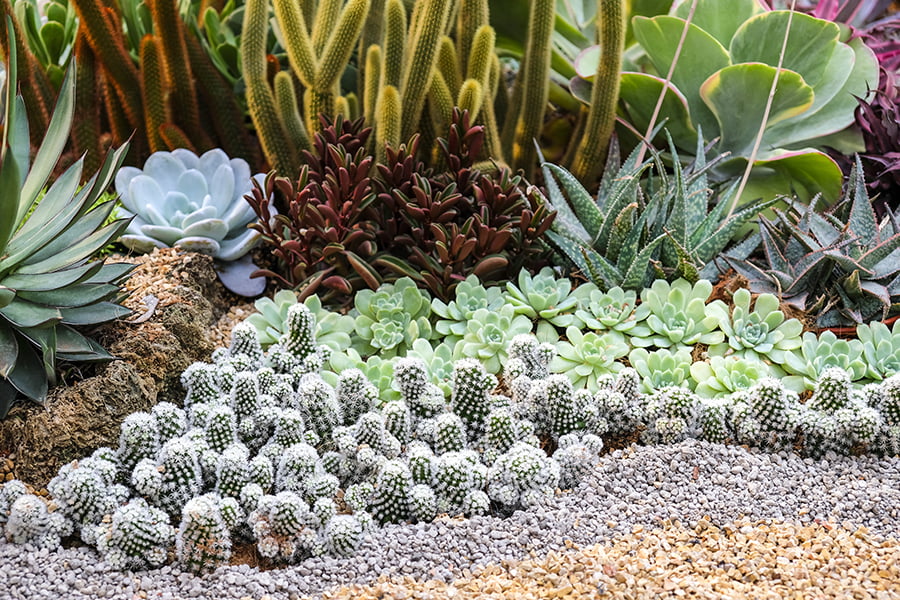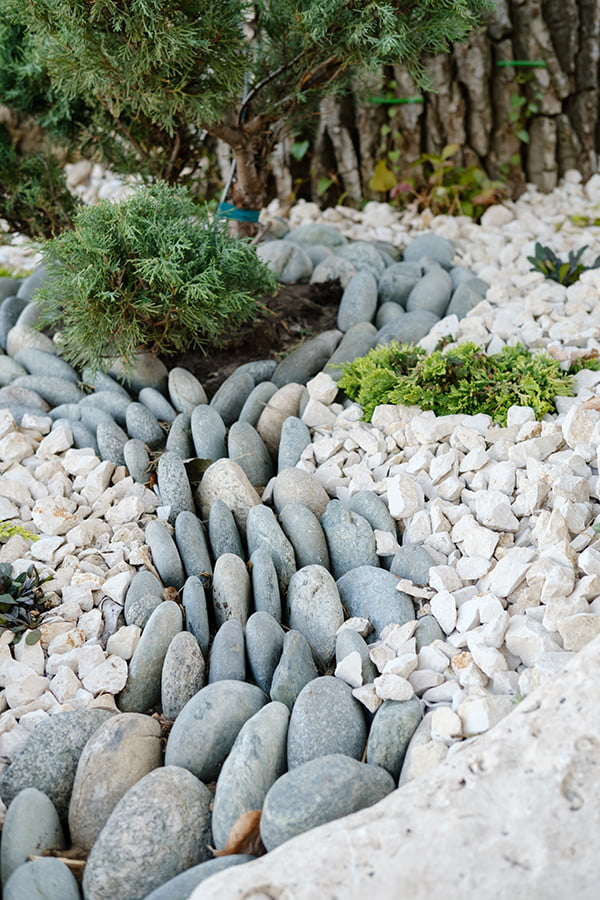Xeriscaping involves using plants that are drought-tolerant and require minimal water, selecting appropriate soil types, and incorporating efficient irrigation systems.
Xeriscaping can include the use of mulch, gravel, or other ground coverings to reduce evaporation and help retain moisture in the soil.
Xeriscaping is a great way to create a beautiful and sustainable landscape without using large amounts of water. It involves the use of drought-tolerant plants, mulch, and other strategies to reduce water consumption while still creating an attractive outdoor space.
In this blog post, we’ll explore how you can use xeriscaping to create a beautiful and sustainable landscape in your own backyard. We’ll discuss the benefits of xeriscaping, tips for getting started with it, and some great plant options for your xeriscape garden.
Look Inside:
Choosing Drought-tolerant Plants

Choosing the right plants for xeriscaping is essential in order to ensure that the landscape will be both attractive and able to withstand periods of drought. Drought-tolerant plants are those that require minimal water, can survive in dry conditions, and are adapted to local climate conditions.
When selecting these types of plants, it is important to consider their size, shape, color, texture, and growth rate as well as how much sun or shade they need. It is important to choose native species whenever possible since they are already adapted to the local environment and require less maintenance than non-native species.
By carefully selecting drought-tolerant plants for your xeriscape design you can create an attractive landscape that will remain healthy even during periods of drought.
Selecting Native Species

When selecting native species for xeriscaping, it is important to consider the climate and soil conditions in your area. Native plants are adapted to local weather patterns, so they require less water than non-native species.
They are more likely to thrive in the existing soil conditions without needing additional fertilizers or amendments. By choosing native species that are well-suited to your region, you can create a beautiful and sustainable landscape with minimal maintenance requirements.
Grouping Plants With Similar Water Needs

This technique involves grouping plants together based on their water requirements, so that they can be watered efficiently and effectively. By doing this, you can ensure that each plant gets the right amount of water without wasting any resources.
For example, if you have a group of drought-tolerant plants in one area and a group of more moisture-loving plants in another area, you can easily adjust your watering schedule to meet the needs of both groups without over or under-watering either one. Grouping plants with similar water needs helps to create a visually appealing landscape as well as helping to conserve resources.
Using Mulch and Compost to Retain Moisture

Mulch helps retain moisture in the soil by providing an insulating layer on top of the soil. This layer prevents water from evaporating quickly, allowing it to be absorbed by the roots of plants.
Compost also helps retain moisture in the soil by adding organic matter that holds onto water molecules for longer periods of time. Compost provides essential nutrients to plants, helping them grow healthy and strong even during times of drought.
By using mulch and compost together in your xeriscape design, you can create a beautiful landscape that is both sustainable and resistant to drought conditions.
Incorporating Hardscaping Elements Such As Rocks and Gravel

Incorporating hardscaping elements such as rocks and gravel into your xeriscape can add texture, color, and interest to the design. Rocks can be used in various ways, from creating pathways or edging around beds to adding height with rock walls or terraces.
Gravel can also be used for paths or driveways, as well as for mulching around plants. Both rocks and gravel are low maintenance materials that require little water once established.
They also help retain moisture in the soil which helps reduce evaporation from the sun’s heat. By incorporating these hardscaping elements into your xeriscape design you will not only create an attractive landscape but one that is also sustainable over time.
Installing a Drip Irrigation System or Rainwater Harvesting System

Drip irrigation systems use low-pressure water lines to deliver water directly to the roots of plants, reducing evaporation and runoff. This helps conserve water while still providing enough moisture for plants to thrive.
Rainwater harvesting systems collect and store rainwater from rooftops or other surfaces, which can then be used for watering gardens and landscapes. Both of these methods are effective ways to reduce water usage in landscaping while still keeping your garden healthy and beautiful.
Creating Berms and Swales for Water Runoff Management

One way to use xeriscaping for water runoff management is by creating berms and swales. Berms are mounds of soil or mulch that are built up around the perimeter of an area, such as a garden bed or lawn.
They act as barriers to help keep water from running off the property and into storm drains or waterways. Swales are shallow channels dug into the ground which direct rainwater away from buildings and towards areas where it can be absorbed by plants or evaporate naturally.
By combining these two elements, you can create an effective system for managing runoff while also adding visual interest to your landscape design.
